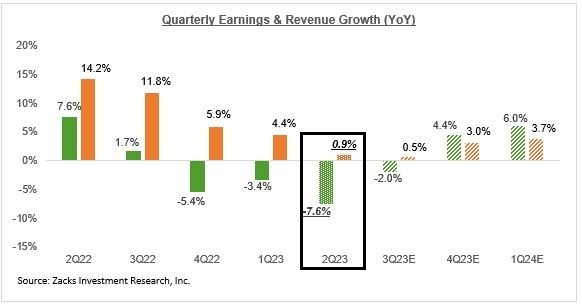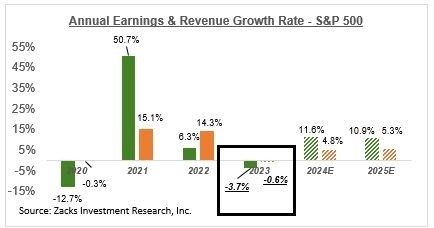Earnings Remain Stable: No 'Cliff' In Sight

Image Source: Pexels
The somewhat mixed showing from the traditional retailers in their Q2 earnings reports was primarily due to management execution and less a function of any significant moderation in consumer spending.
We discussed Target (TGT - Free Report) last week, which missed top-line and comp estimates but did better on margins and inventories. We noted that while management appeared satisfied with current inventory levels, investors will be justified in wondering whether Target has really addressed the issue if Q2’s weak sales and traffic trends will result in unsold inventory in the coming periods.
Unlike Walmart (WMT - Free Report), whose quarterly report showed all-around strength, Target has struggled in the post-Covid period, failing to foresee shifts in consumer spending away from discretionary categories like apparel, home furnishings, and electronics, resulting in unsold inventory that then needed to be cleared through markdowns.
Walmart stumbled last year following its Q1 report, as did Target, but it recovered quickly. In its Q2 report, Walmart benefited from broad market share gains and momentum in key growth initiatives.
While Walmart has a much bigger grocery business, Target has all along been seen as more of a play on discretionary merchandise, demand for which has moderated in the post-Covid period. That said, Target appears to have lost out more than other retailers that sell comparable merchandise, with TJX Companies (TJX - Free Report) as a good example of one such retailer.
The challenge for retailers like Target, Walmart, TJX, and others is not only to have the correct merchandise but also to deal with higher expenses related to freight, payroll, and other items.
We have provided the updated Q2 earnings season scorecard for the Zacks Retail sector in the detailed report.
Beyond the Retail sector, the 2023 Q2 reporting cycle has come to an end for 11 of the 16 Zacks sectors, with results from 96% of the S&P 500 index companies already out.
2023 Q2 is on track to be the third consecutive quarter of declining S&P 500 earnings. The expectation currently is for another earnings decline in Q3 of -2.0%, after which growth turns positive in Q4 and continues in 2024. In fact, Q3 earnings would be positive had it not been for the Energy sector drag.

Image Source: Zacks Investment Research
As you can see from these quarterly earnings-growth expectations, the long-feared recession doesn’t show up in this near-term earnings outlook. A big-picture view of corporate profitability on a long-term basis doesn’t leave much room for a recession either, as you can see in the chart below.

Image Source: Zacks Investment Research
These growth expectations reflect current bottom-up consensus earnings estimates for the individual S&P 500 companies that, in turn, are based on the estimates from individual sell-side analysts that cover those companies.
Regular readers of our earnings commentary know that we have flagged a notable stabilization in the estimate revisions trend since the start of 2023 Q2, reversing the persistently negative trend that had been in place for almost a year prior.
Earnings estimates in the aggregate for the S&P 500 index have come down only a touch since the start of April, with a number of key sectors starting to see modest positive estimate revisions. These sectors include Construction, Industrial Products, Autos, Tech, Medical, and Retail. These trends have been confirmed and strengthened by the Q2 earnings results and management’s guidance and commentary for the current and coming quarters.
More By This Author:
Why Are Stocks Moving Lower?
Q2 Earnings Confirm Improving Growth Trends
Retail Earnings Looming: What To Expect
Disclosure: Zacks.com contains statements and statistics that have been obtained from sources believed to be reliable but are not guaranteed as to accuracy or completeness. References to any specific ...
more


